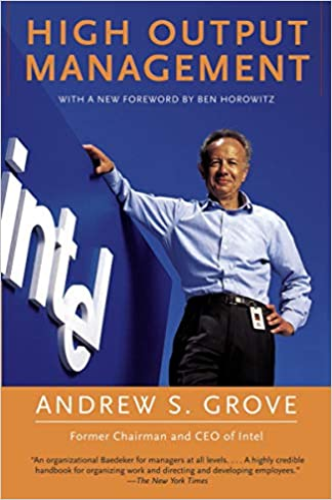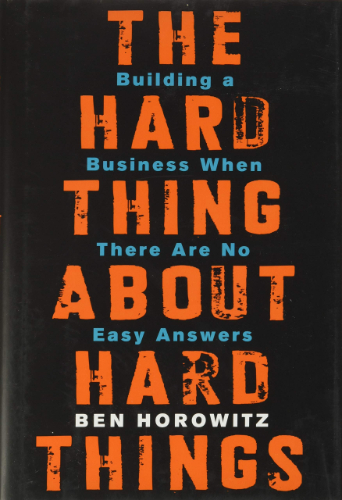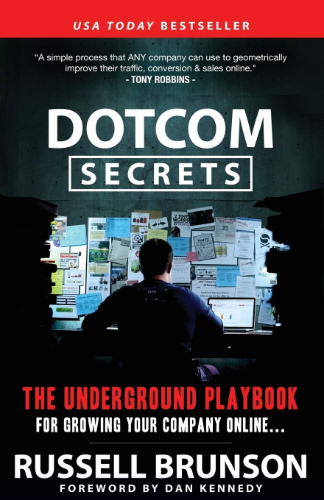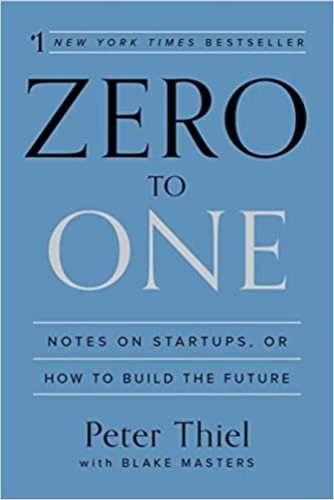Hacking Growth: How Today’s Fastest Growing Companies Drive Breakout Success: Summary and Notes

One sentence summary: Hacking Growth is the book to read if you want to achieve breakout success with your startup. Sean Ellis and Morgan Brown distill timeless growth hacking techniques that have worked incredibly well for companies like Facebook, BitTorrent, Dropbox, Airbnb and many more.
One paragraph summary: Sean Ellis and Morgan Brown are arguably two of the most famous marketing gurus in Silicon Valley so when they sat down to write a book, it was bound to be phenomenal. Hacking Growth: How Today’s Fastest Growing Companies Drive Breakout Success is what you carry around when running a startup. Sean is, after all, the mind behind the meteoric rise of startups like Dropbox, Eventbrite, and LogMeIn.
Favorite quote from the author:
I really looked forward to reading Hacking Growth: How Today’s Fastest Growing Companies Drive Breakout Success because the book is written by none other than Sean Ellis. If you don't know, Sean is the marketing genius behind the success of several billion-dollar startups including Dropbox, Uproar, Eventbrite, and LogMeIn. The guy even invented the term growth hacking and is the CEO of Growthhackers.com, a consultancy that helps startups achieve their growth targets. He is quite the interesting fellow, but Sean wasn't always like that.
When the internet was still young, and few people had ever thought of running online ads, Sean was selling print ads in Budapest. It was then that a friend called saying he was creating an online company and thus started the long journey that has made Sean a legend in Silicon Valley. Sean didn't approach marketing in a traditional sense; he was interested in consumer data and always asked what the data meant. He also saw the value of constant experimentation and applied it ruthlessly in all his projects. The rest as they say, is history.
His book is borne out of these experiences but it also shares the experiences of a few other companies including Bittorrent, Savings Catcher, Hubspot, Skype, and Airbnb
Why would you want to read the book? Here is an excellent quote from the authors:
“By revolutionizing the long-established business processes for developing and launching products, institutionalizing continuous market testing, and systematically responding to the demands of the market in real time, growth hacking makes companies much more fleet-footed. It enables them to seize new opportunities and correct for problems—fast.”
By my flimsy judgement — okay, it's a little better than that — this book is a must-read especially for online entrepreneurs. It changed my business and it can change yours too. The book will really make sense to you if you read it alongside other titles in our growth series.
Main takeaways from Hacking Growth by Sean Ellis and Morgan Brown
Hacking Growth packs a punch when it comes to offering lessons to business people but I found the following lessons stood out the most for me.
-
Knockdown the division silos
-
Creating a must-have product is the baseline requirement for rapid and sustainable growth
-
Identify your growth levers
-
Success in growth hacking comes from a series of small wins
-
The purpose of a business is to create and keep customers
-
Complacency is the greatest threat to long-term success
Lesson 1: Knockdown the division silos
The first thing that Sean and Morgan imply is that there should be no barriers between the sales, marketing, product development, and engineering teams in any startup. At first, this might seem obvious but it is not what happens at most startups. A good illustration comes from BitTorrent, things only started to change when the company hired a dedicated product marketing manager (PPM) who was able to bridge the gap between the software team and the marketing team.
Before the introduction of PPM, the BitTorrent marketing team was primarily focused on raising customer awareness to attract new leads while the work of increasing activation and retention was left to the product and engineering teams. Because the two groups rarely collaborated, there was no way to take advantage of consumer behavior insights that each had.
Sean and Morgan say it is critical for startups to have a growth team comprised of the following groups of people:
-
A growth leader: Manages the team and sets the goals for everyone
-
A product manager :Is in charge of the product development process
-
Software engineers:These bring in the technical expertise needed to create and tweak the product
-
Marketing and communication specialists:These are responsible for marketing campaigns and keeping the communication channels open
-
Data analysts:These fellows crunch the data for better insights
-
Product designers:Product designers offer design tips and suggest ideas and experiments to run
The main task of the growth team is to point out problems in the activation process and to find solutions. A common source of friction for many startups is a poor interface that prevents potential customers from completing something like a signup or upgrading to a pro version.
Lesson 2:Creating a must-have product is the baseline requirement for rapid and sustainable growth
What is a must-have product? Sean and Morgan say that a must-have product is a product with a core value to a specific customer group. The authors advise that before entering the rapid growth phase, startups should make sure that their product is a must-have for at least 40% of their customers. Otherwise, there is the risk of driving the marketing efforts too hard for a product no one wants. The risk for doing this is exceptionally high for startups that have to constantly prove their worth to venture capitalists.
The other thing that a startup should look out for is its bloated ego. When you create a product, you can have too much faith in it and forget that ultimately, it is the market that has to decide. Sean and Morgan create a simple test to tell whether a product or a service has made it to a must-have category. It involves creating a survey with the following question: “How disappointed would you be if the product no longer existed tomorrow?” If at least 40% of the respondents say they’d be very disappointed, then it’s time to launch the rapid growth phase
Lesson 3: Identify your growth levers
Before moving into the high-tempo growth phase, Sean and Morgan say that you must determine your growth strategy and identify your growth levers and whether they are the right ones. The way to do this is via rapid experimentation that aims at finding promising opportunities. This basically means that you have to apply the growth hacking process: The process looks as follows:

In the early stages of the growth phase, the goal is to run experiments that will significantly impact growth in the least amount of time. What’s the point of doing this? Hacking Growth doesn’t say it explicitly, but Traction , another phenomenal book on growth hacking, does. The point is to identify which traction channels best serve the startup’s interests.
A tool that helps identify growth levers is the fundamental growth equation. This simple equation identifies all the key factors that combine to drive your growth. Sean and Morgan identify the following as the fundamental growth equation for eBay:
NUMBER OF SELLERS LISTING ITEMS × NUMBER OF LISTED ITEMS × NUMBER OF BUYERS × NUMBER OF SUCCESSFUL TRANSACTIONS = GROSS MERCHANDISE VOLUME GROWTH
Lesson 4: Success in growth hacking comes from a series of small wins
Sean and Morgan say that you don’t need massive improvements to realize growth. What you need are small wins that will compound over time. For example, a 5% increase in conversation rate per month translates to an 80% improvement in a year.
Minor tweaks were what saved BitTorrent, and they are probably what’s going to save your business too. After each iteration of experiments, you are supposed to apply the lessons and keep the process going until you hit the right sweet spot. The quality of your improvements will depend heavily on how fast you learn.
An excellent quote from the authors:
“Learning more by learning faster is also the goal—and the great benefit—of the high-tempo growth hacking process. The companies that grow the fastest are the ones that learn the fastest.”
Lesson 5: The purpose of a business is to create and keep customers
While this might be obvious enough, it is not always clear how startups can create and retain their customers. Sean and Morgan say that the main strategy is to provide a product that solves a problem for the user.
Because startups go through different phases, retention translates to a different thing at each phase. The authors identify three phases of retention:
-
The initial retention period:A new user finds value in the product
-
The medium retention period:The novelty of the product starts to wear off and the challenge for the growth team is to make using the product a habit
-
Long-term retention:For long term retention, the product must keep offering value to the customer
Sean and Ellis suggest that one of the best ways of studying retention rate is by conducting a cohort analysis that segments the customers. Once the cohort analysis is done, drop-off points can be detected and surveys can even be sent out to identify why customers quit at specific points.
Lesson 6: Complacency is the greatest threat to long-term success
So you have achieved the growth you wanted? What next? Sean and Morgan warn against being blinded by short-term success. Growth teams must keep innovating otherwise a startup will face the same fate that befell Skype. Once Skype was acquired by Microsoft, the company stopped innovating, as a consequence, everyone is on Zoom now.
Sean and Morgan also point out that growth can stall because when a startup takes its core services and products for granted.
Wrap Up
After reading Hacking Growth I can tell you for free that no summary can do the book justice. You just have to read it yourself as Sean and Morgan really dive deep into what it takes for a startup to achieve phenomenal growth. Their main point is that it all comes to data and what you do with it. A four-word summary for the book would be experiment, learn, apply, and repeat.
Who Would I recommend the Book To?
Anyone interested in growing an online business should read this book. It doesn’t matter whether you are a blogger or the next Mark Zuckerberg, the process is the same. Don't hesitate to pick it up, as it is a real eye opener.
GET THE BOOK ON AMAZONRate this book!
This book has an average rating of 5 based on 2 votes.









































